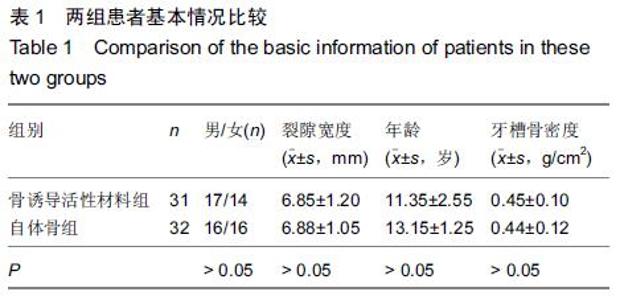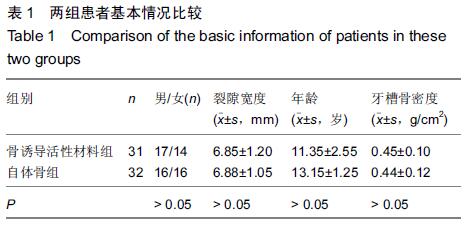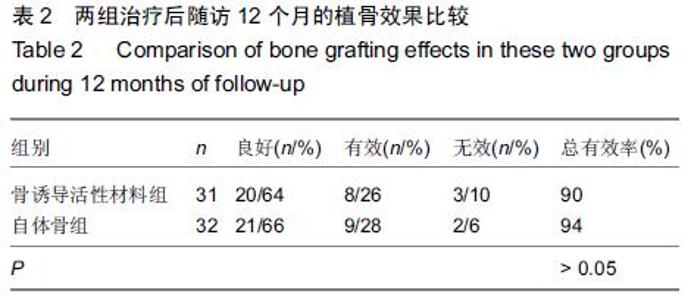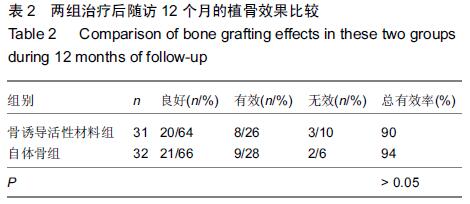[2] 张灵超,赖文佳.正畸应力刺激修复比格犬牙槽突裂动物模型的建立[J].广东牙病防治,2014,22(6):285-288.
[3] Chin M, Ng T, Tom WK, et al. Repair of alveolar clefts with recombinant human bone morphoenetie protein(rhBMP-2) in patients with clefts.J Craniofac Surg.2005;16(5):778- 789.
[4] 康嘉晏,钱玉芬,华诚.含骨缝犬单侧牙槽突裂三维有限元模型的建立[J].中国口腔颌面外科杂志,2014,12(5):390-396.
[5] 张继斌,钟小龙.正畸辅助水平向牵张成骨治疗牙槽突裂的临床探讨[J].广东牙病防治,2014,22(8):424-427.
[6] 朱浩,张力,鲍海宏,等.自体髂骨移植修复牙槽突裂的临床研究[J].临床军医杂志,2014,42(10):1057-1058.
[7] 张岱尊,周容,肖文林.锥形束CT对牙槽突裂植骨术后成骨效果的评价[J].中华口腔医学杂志,2014,49(6):352-356.
[8] Koh KS,Kim H,Oh TS,et al.Treatment algorithm for bilateral alveolar cleft based on the position of the premaxilla and the width of the alveolar gap.J Plast Reconstr Aesthet Surg.2013; 66(9):1212-1218.
[9] 刘璐玮,马莲.牙槽突裂植骨术后上颌前部牙合片与CBCT评价方法的比较研究[J].中华口腔正畸学杂志,2014,21(3):156-160.
[10] 张倩,焦炳茹,佘小明.骨诱导活性材料与胶原生物膜联合应用修复牙槽嵴突裂14例疗效分析[J].贵州医药,2014,38(7): 631-632.
[11] 孙健.正畸牙移入对牙槽突裂植骨区骨改建的生物学影响[J].中国口腔颌面外科杂志,2014,12(2):116-120.
[12] 吴忆来,杨育生,陈阳,等.牙槽突裂的牙颌特性和修复计划制定[J].口腔颌面外科杂志,2014,24(2):119-122.
[13] 张栋杰,黎凡,崔颖秋,等.单侧完全性唇腭裂患者自体骨移植修复牙槽突裂后早期牙移入的CT评价[J].中华医学美学美容杂志, 2014,20(3):199-202.
[14] 李伟,吴平,李琳,等.单侧完全性唇腭裂患者牙槽植骨后前牙牵引助萌矫治效果评价[J].中国实用口腔科杂志,2014,7(5):279-282.
[15] 王秀荣.早期持续冷敷应用于牙槽突裂患者术后植骨区的疗效观察[J].护理实践与研究,2013,10(13):23-24.
[16] 李志强,黄诺蓓.术前正畸联合可吸收胶原生物膜用于牙槽突裂植骨修复30例分析[J].广东牙病防治,2013,21(10):517-520.
[17] 孙毅,黄长波,尚政军.口腔修复膜和人工骨粉修复牙槽突裂的应用研究[J].现代医药卫生,2013,29(15):2326-2327.
[18] 虎小毅,屠军波,蒋菲,等.CBCT3D测量在牙槽突裂手术前后鼻外形评价中的应用研究[J].中国美容医学,2013,22(12):1283-1285.
[19] 何祖球.自体骨联合人工骨在牙槽突裂修复中的应用[J].医学综述,2013,19(13):2488-2490.
[20] 虎小毅,屠军波,蒋菲,等.ImageJ软件在牙槽突裂骨移植术前骨缺损量评估中的应用[J].陕西医学杂志,2013,42(6):710-712.
[21] 马志伟.自体髂骨松质骨移植牙槽突裂修复术76例临床护理[J].齐鲁护理杂志,2013,19(6):98-99.
[22] 韶青华.牙槽突裂植骨与颌骨生长发育的关系[J].国际口腔医学杂志,2013,40(1):132-134.
[23] 杨超,石冰.腭侧入路牙槽突裂植骨术的初步应用与评价[J].华西口腔医学杂志,2013,32(1):30-33.
[24] 黄英,黄秋雨,曾令婵.自体髂骨骨松质移植修复先天性牙槽突裂的护理[J].全科护理,2013,11(3):200-201.
[25] 刘素春.38例自体髂骨松质骨移植修复牙槽突裂术的护理配合及体会[J].中国卫生产业,2013,10(1):37-37.
[26] Kim SW,Park SO,Choi TH,et al.Change in upper lip height and nostril sill after alveolar bone grafting in unilateral cleft lip alveolus patients.J Plast Reconstr Aesthet Surg.2012;65(5): 558-563.
[27] Liang L,Liu C.Trans-sutural distraction osteogenesis for alveolar cleft repair: An experimental canine study.Cleft Palate Craniofac J. 2012;49(6):701-707.
[28] Offert B,Janiszewska-Olszowska J,Dudkiewicz Z,et al.Facial esthetics in children with unilateral cleft lip and palate 3 years after alveolar bonegrafting combined with rhinoplasty between 2 and 4 years of age.Orthod Craniofac Res.2013; 16(1):36-43.
[29] 杨继英.两种不同植骨材料修复牙槽突裂患者的术后护理体会[J].中国社区医师:医学专业,2012,14(22):367-368.
[30] 黄烈平,黄宁.唇腭裂患者牙槽突裂植骨术前使用半固定式四眼圈簧扩大上牙弓的正畸治疗[J].华西口腔医学杂志,2012,30(4): 393-395.
[31] 吴军.正畸牙移入牙槽突裂患者植骨区的牙CT评价[J].华西口腔医学杂志,2012,30(4):383-387.
[32] Mitsukawa N,Saiga A,Morishita T,et al.Special distraction osteogenesis before bone grafting for alveolar cleft defects to correct maxillary deformities in patients with bilateral cleft lips and palates: distraction osteogenesis performed separately for each bone segment.J Craniomaxillofac Surg.2014;42(5): 623-628.
[33] 陈仁吉.唇腭裂患者牙槽突裂骨缺损修复材料的现状及发展方向[J].中国实用口腔科杂志,2012,5(6):340-345.
[34] 何志超.同种异体松质骨修复牙槽突裂的临床应用体会[J].医学理论与实践,2011,24(16):1955-1956.
[35] Cagáňová V,Borský J,Smahel Z,et al.Facial growth and development in unilateral cleft lip and palate: Comparison between secondary alveolar bone grafting and primary periosteoplasty.Cleft Palate Craniofac J.2014;51(1):15-22.
[36] Yoshida S,Suga K,Nakano Y,et al.Postoperative evaluation of grafted bone in alveolar cleft using three-dimensional computed tomography data.Cleft Palate Craniofac J.2013; 50(6):671-677.
[37] 黎凡,王洪涛.可吸收胶原膜在预防牙槽突裂植骨术后鼻前庭瘘的应用研究[J].广东牙病防治,2011,19(7):383-385.
[38] 丁常春,陈传俊,陈晓阳,等.自体髂骨松质骨移植修复牙槽突裂的临床应用[J].中国医学创新,2011,8(6):74-75.
[39] 张栋杰:.组织工程骨修复牙槽突裂的研究进展[J].国际口腔医学杂志,2011,38(1):36-39.
[40] 佘小明,张倩,田锟,等.骨诱导活性材料在修复牙槽突裂中的临床研究[J].华西口腔医学杂志,2010,28(4):391-394.



